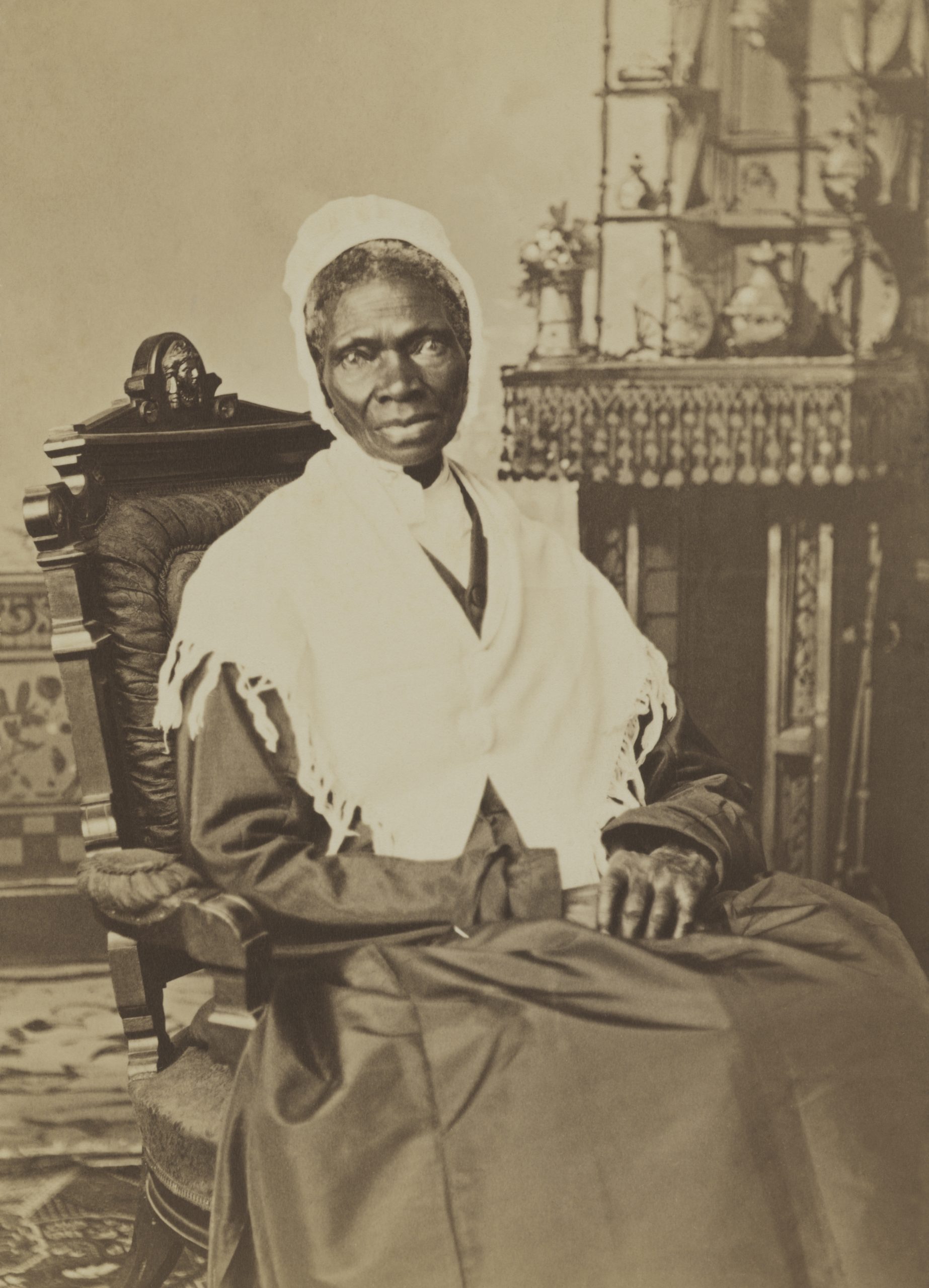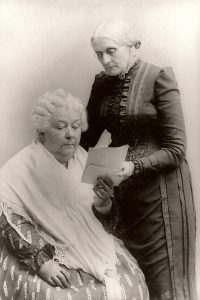14.2.1.2 First Wave Activists
Valentin Quintus Nicolescu and Gregory Millard
Such revolutionary ideas inspired a wide women’s social movement that demanded broad institutional reforms. The first wave feminist agenda was a clear-cut programme aiming for civil, social and political rights through grassroots organizing and pressuring the authorities to implement health and labor rights, marriage equality and women’s suffrage.

A major marker in this campaign was the Woman’s Rights Convention in Seneca Falls, USA (1848), where participants agreed on the Declaration of Sentiments, which stated that: “All men and women are created equal … The history of mankind is a history of repeated injuries and usurpation on the part of man towards woman, having in direct object the establishment of an absolute tyranny over her.” In 1851, Black American abolitionist Sojourner Truth delivered her famous “Ain’t I a Woman(pdf)” speech at the Women’s Rights Convention in Akron, Ohio in an attempt to raise awareness of the extremely difficult situation of Black American women. Unfortunately, the intersection of race and gender would not become part of the feminist debate until the second wave in the second half of the 20th century.
Listen to Sojourner Truth’s “Ain’t I a Women” speech, read by Carol Zsiga.

In 1866, Elizabeth Stanton and Susan B. Anthony established the American Equal Rights Association, particularly focusing on women’s right to vote. By the turn of the 20th century, suffrage – the right to vote and to participate fully in political life – had become a signature feminist cause and resonated in many countries. “Suffragette” campaigns included civil disobedience and “forms of behavior that challenged conventional expectations about women being submissive and accepting of their subordinate status, and especially about middle-class women being gentle and ladylike” (Purvis, 2002, p. 73).
Great gains were achieved. In Canada, the right to vote in national elections was won for most women in 1918, the right to run for office secured a year later, and the legal standing of “persons” attained in 1929. In the United States, the 19th Amendment was ratified in 1920, finally granting American women the right to vote. Women over the age of 30 won the right to vote in the U.K. in 1918 and gained the franchise on a fully equal footing with men in 1928. For a global overview of women’s suffrage, see here. By midcentury, equal political and legal rights for women had become mainstream principles in much of the western world, and women had acquired legal access to levers of political power.
Media Attributions
- Sojourner Truth, 1870 © Randall Studio adapted by Coffeeandcrumbs is licensed under a CC0 (Creative Commons Zero) license
- Elizabeth Cady Stanton and Susan B. Anthony © Unknown author is licensed under a Public Domain license

